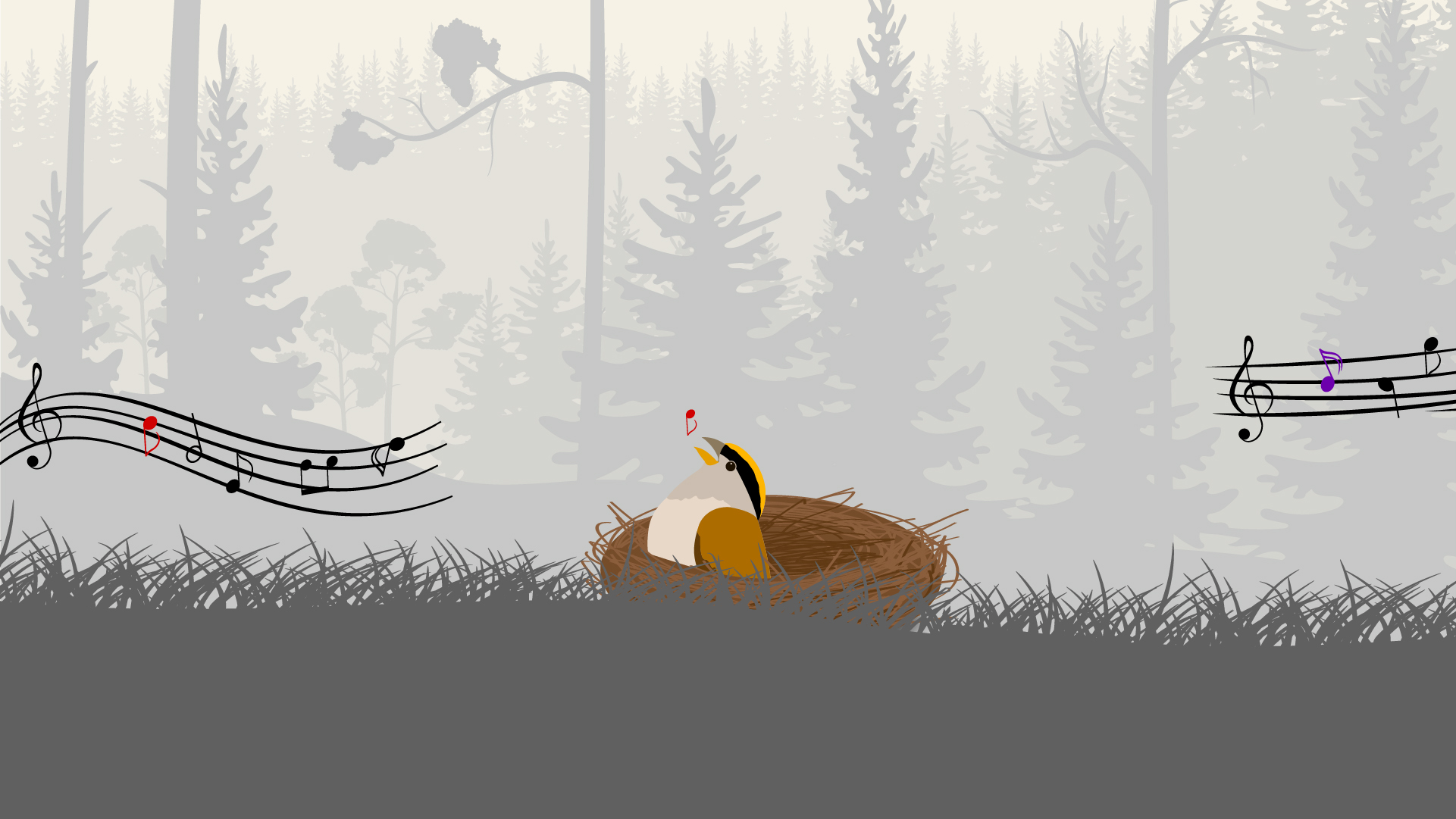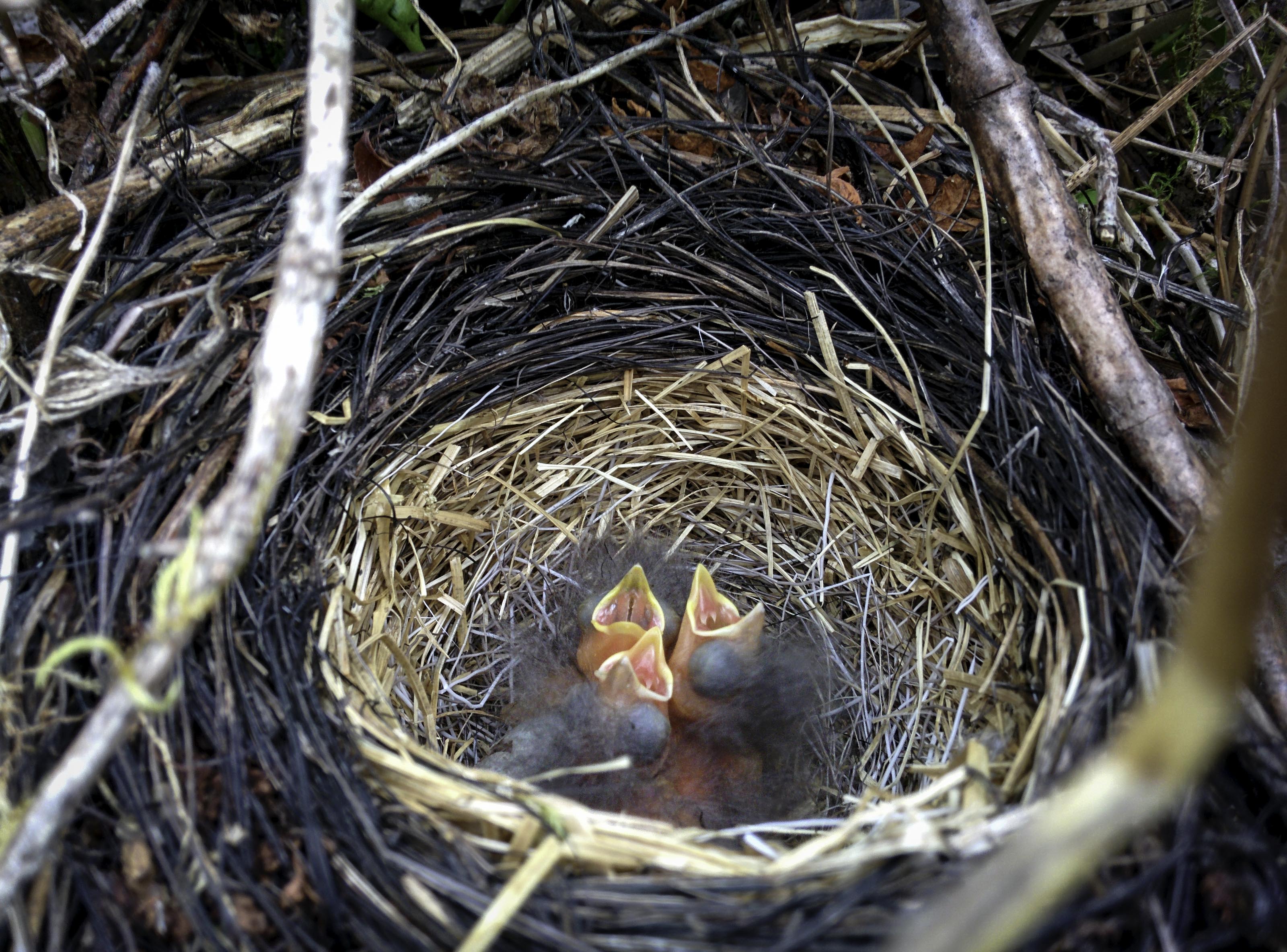
A new University of Nebraska-Lincoln study has shown that golden-crowned sparrow chicks can name their tune in just one note – even before knowing the song.
The research suggests that week-old golden-crowned chicks, despite not yet learning their mating song, can distinguish that song from another sparrow species’ based on its introductory whistle alone.
Nebraska biologists Emily Hudson and Daizaburo Shizuka found that golden-crowned chicks generally chirped more when hearing their species’ first note vs. that of the white-crowned sparrow, a closely related species that likewise inhabits the western edge of North America. Golden-crowned chicks also responded similarly when hearing just their opening whistle or their entire mating song.
“What we often fail to realize about learning is that we … have to filter out information and figure out what is relevant,” said Shizuka, assistant professor of biological sciences. “We’re looking for these simple cues that could act as an initial filter to (determine) whether something is worth learning or not. There are not that many systems in which we actually have a starting point for that, but this is one.”
“Even though they’re living side by side, it seems like they’re pretty good at not making mistakes about who to breed with, and that’s not actually a given with closely related bird species,” Hudson said. “It seems like a biologically important problem for them to solve – to tell the difference (between songs) – because it’s not just theoretical that they might bump into this other species.
“In a broader sense, we’re really interested in this template and these innate mechanisms because we think they’re probably important in terms of keeping bird species from interbreeding and allowing them to become more divergent.”

Comparing notes
Hudson, Shizuka and their colleagues collected data during a six-week summer expedition to southern Alaska. After tracking female golden-crowned sparrows to their nests and identifying chicks that were about a week old, the researchers temporarily removed the chicks from the nest and played each chick one of four recordings: the golden-crowned whistle, golden-crowned song, white-crowned whistle or white-crowned song. The team then measured the number of times a golden-crowned chick chirped before, during and after the recording.
“If you want to see what’s in place before learning – what these mechanisms are that are going to guide learning later – a good time to do that is before the sparrows have fledged, while they’re still in the nest,” Hudson said. “Historically, that’s not been done that much, because it’s harder (than recording older sparrows).”
The study also represents one of the few successful efforts to collect nestling data in the field rather than the lab, Shizuka said. That’s especially important, he said, because researchers remain uncertain about how exposure to other sounds might influence song learning.

Hudson said the team is conducting further research to explore that very issue. On a later expedition, the researchers recorded 24 hours of sound at each nesting site before performing the same experiment. After determining how much of the golden- and white-crowned song each chick was hearing, the team will look for links between that song exposure and golden-crowned responses.
“Even though we don’t think they’ve started learning their adult song yet,” Hudson said, “they may be picking up some kind of environmental variation that’s affecting their behavioral response when they’re chicks.”
Hudson and Shizuka’s study appeared in the journal Animal Behaviour.










